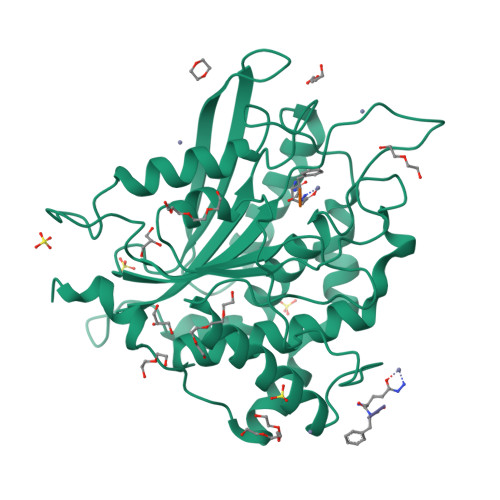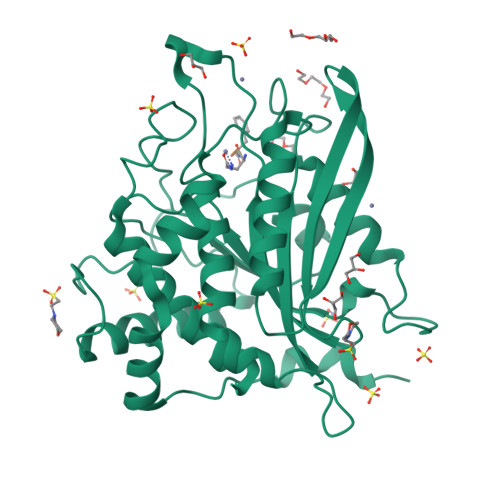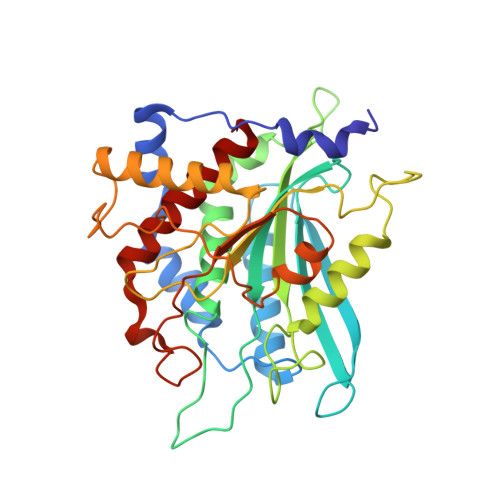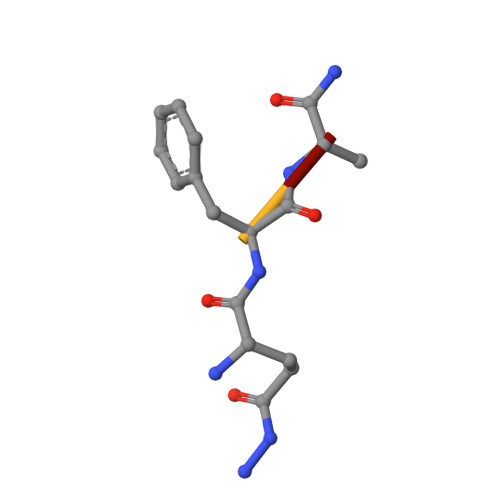Hydrazides Are Potent Transition-State Analogues for Glutaminyl Cyclase Implicated in the Pathogenesis of Alzheimer's Disease.
Kupski, O., Funk, L.M., Sautner, V., Seifert, F., Worbs, B., Ramsbeck, D., Meyer, F., Diederichsen, U., Buchholz, M., Schilling, S., Demuth, H.U., Tittmann, K.(2020) Biochemistry 59: 2585-2591
- PubMed: 32551535
- DOI: https://doi.org/10.1021/acs.biochem.0c00337
- Primary Citation of Related Structures:
6YI1, 6YJY - PubMed Abstract:
Amyloidogenic plaques are hallmarks of Alzheimer's disease (AD) and typically consist of high percentages of modified Aβ peptides bearing N-terminally cyclized glutamate residues. The human zinc(II) enzyme glutaminyl cyclase (QC) was shown in vivo to catalyze the cyclization of N-terminal glutamates of Aβ peptides in a pathophysiological side reaction establishing QC as a druggable target for therapeutic treatment of AD. Here, we report crystallographic snapshots of human QC catalysis acting on the neurohormone neurotensin that delineate the stereochemical course of catalysis and suggest that hydrazides could mimic the transition state of peptide cyclization and deamidation. This hypothesis is validated by a sparse-matrix inhibitor screening campaign that identifies hydrazides as the most potent metal-binding group compared to classic Zn binders. The structural basis of hydrazide inhibition is illuminated by X-ray structure analysis of human QC in complex with a hydrazide-bearing peptide inhibitor and reveals a pentacoordinated Zn complex. Our findings inform novel strategies in the design of potent and highly selective QC inhibitors by employing hydrazides as the metal-binding warhead.
Organizational Affiliation:
Department of Molecular Enzymology, Georg-August University Göttingen, Julia-Lermontowa-Weg 3, 37077 Göttingen, Germany.


























